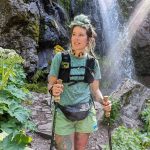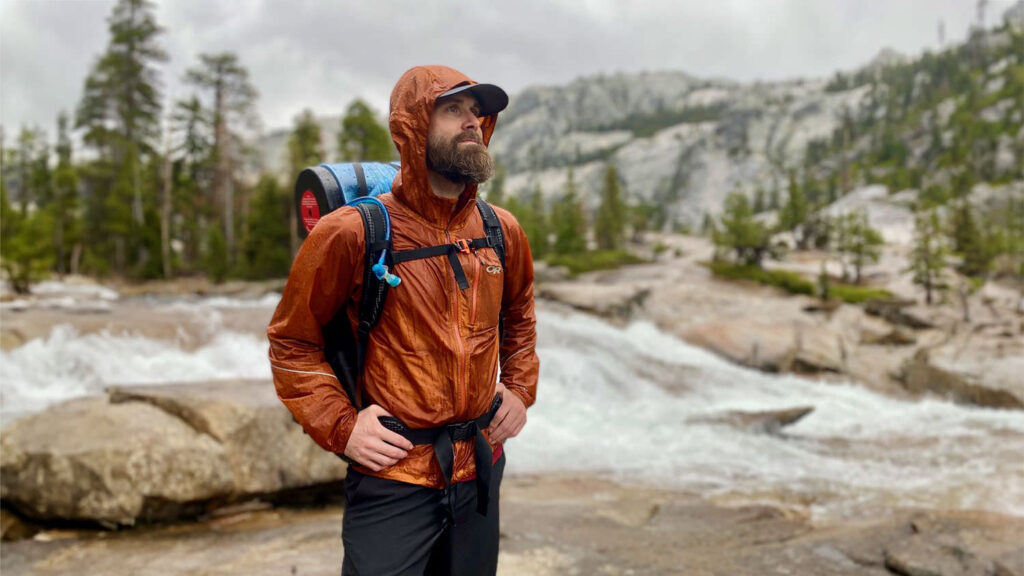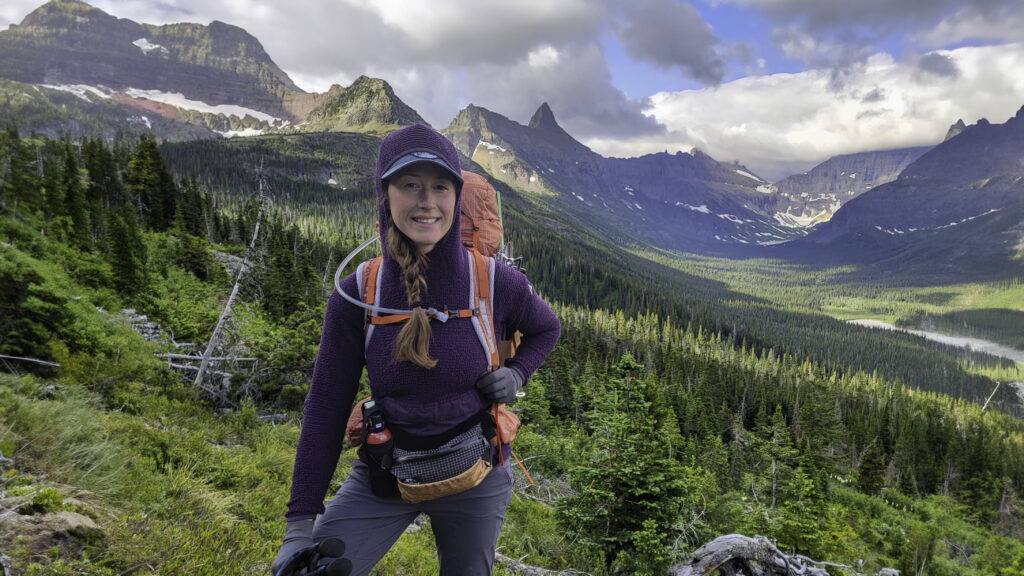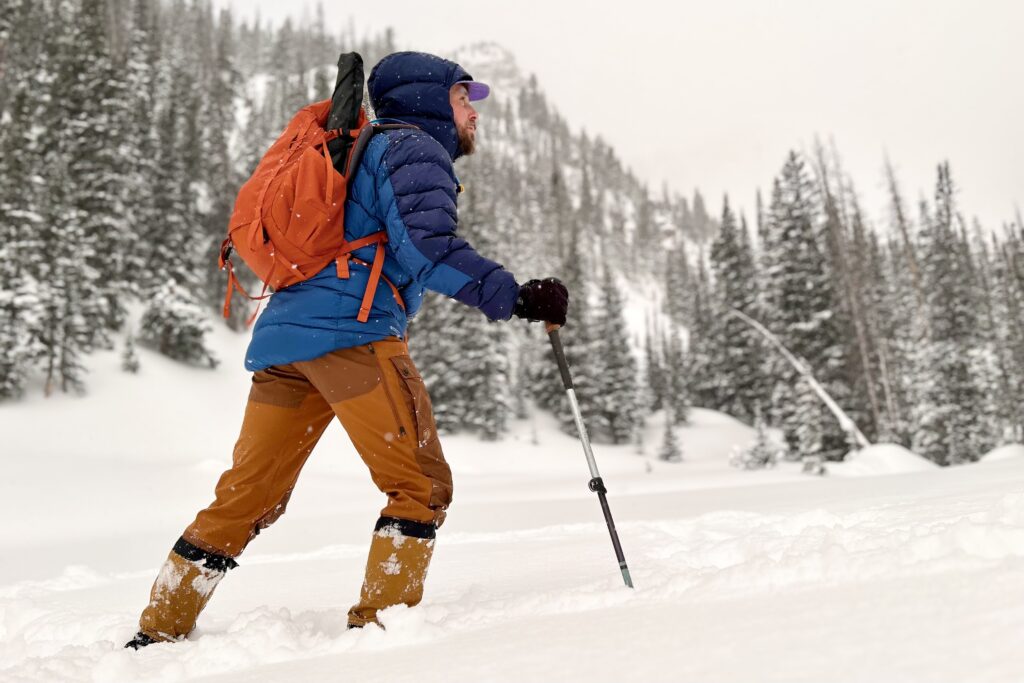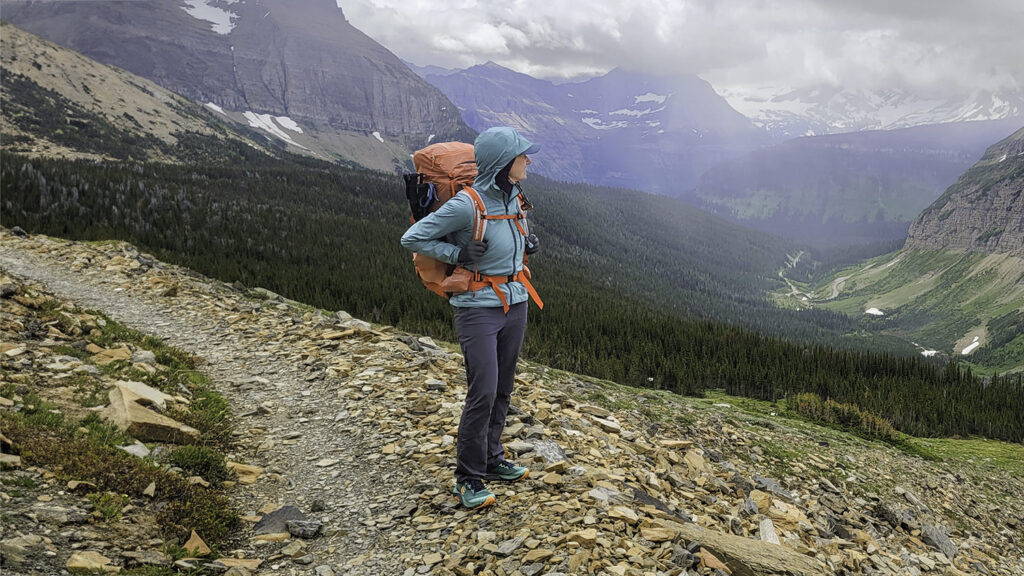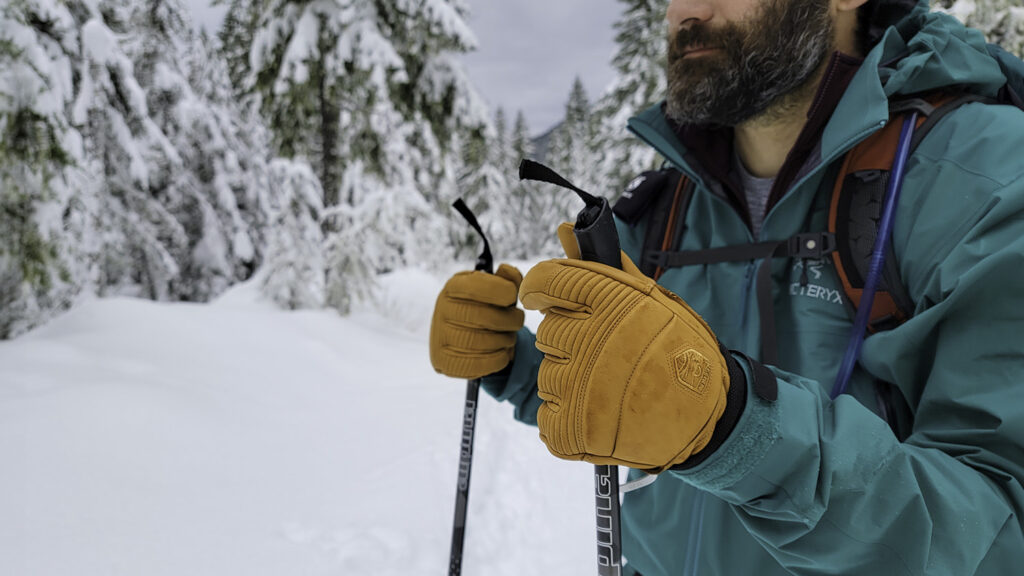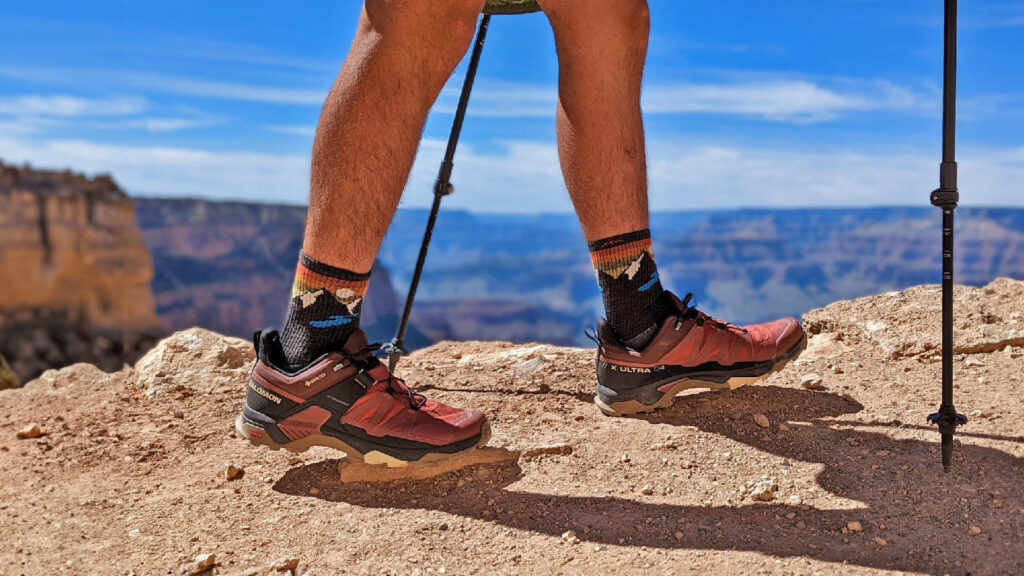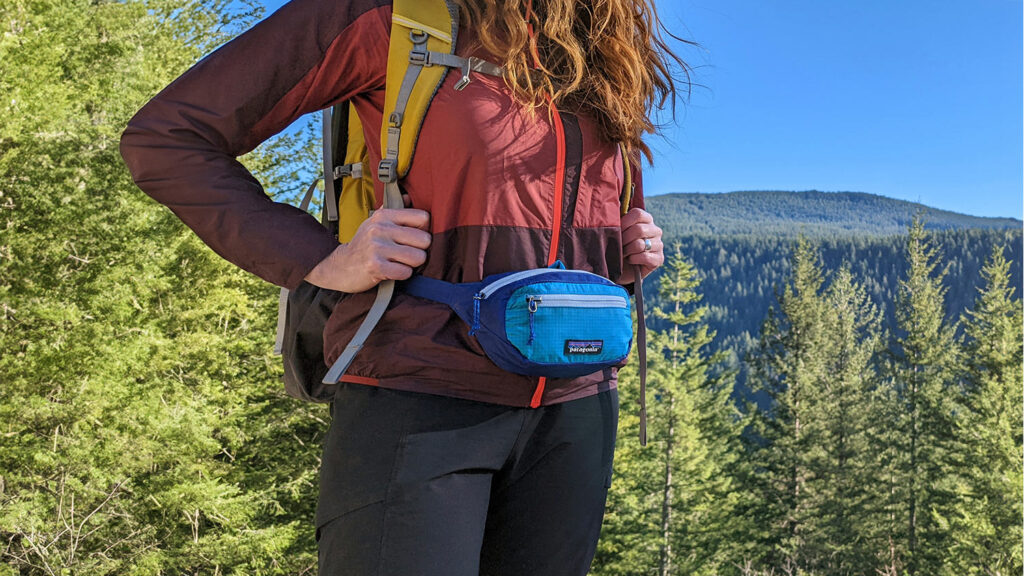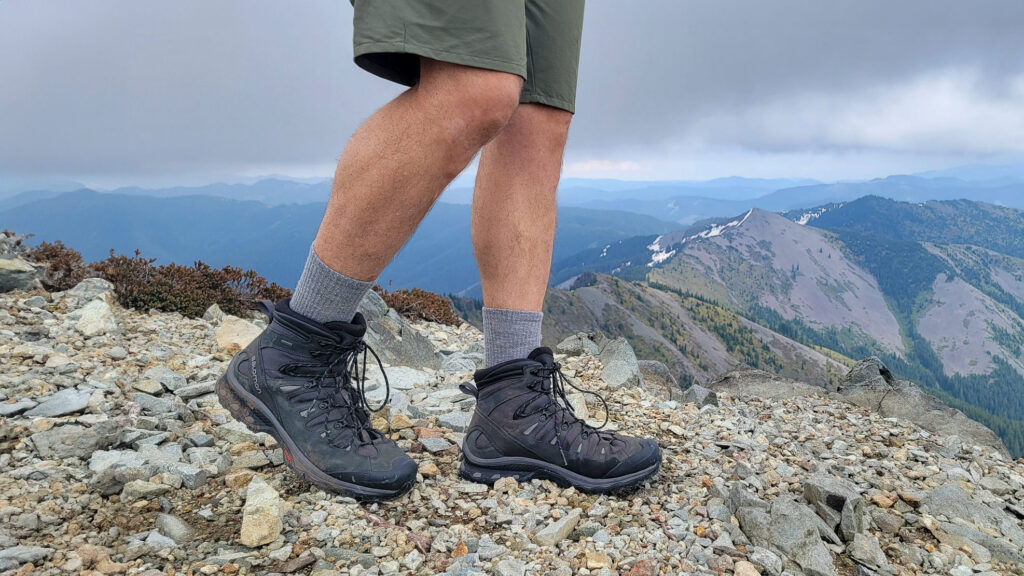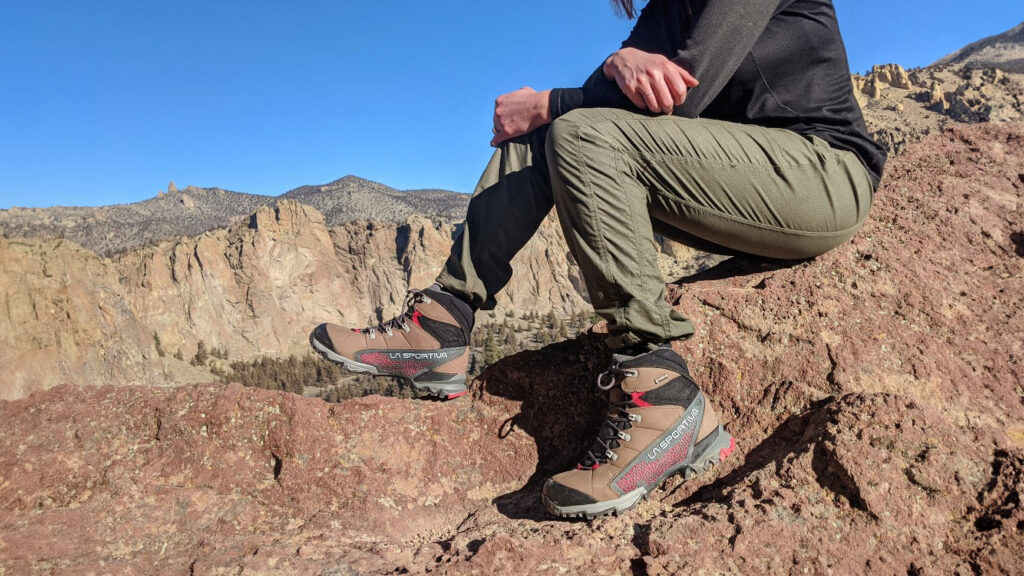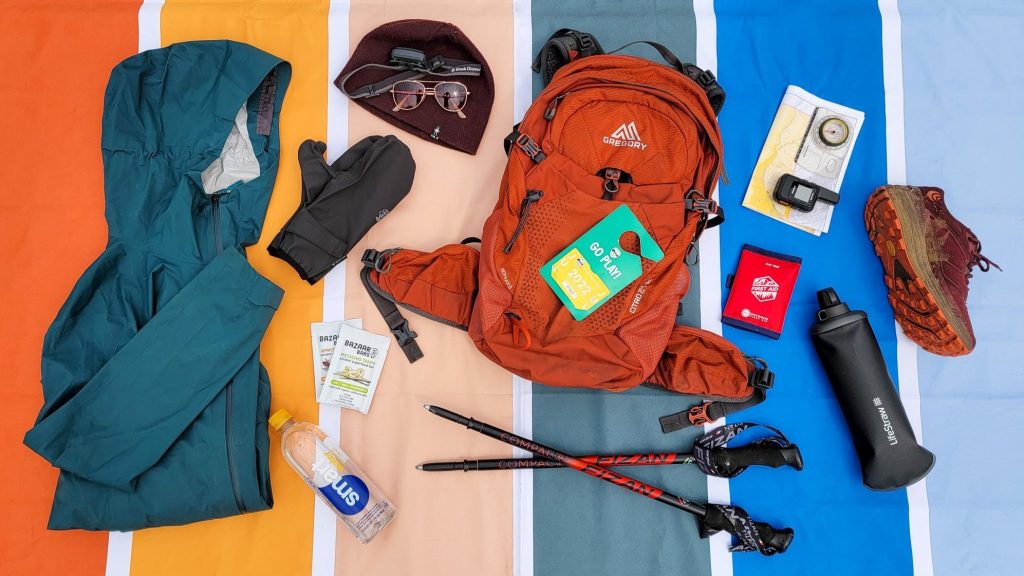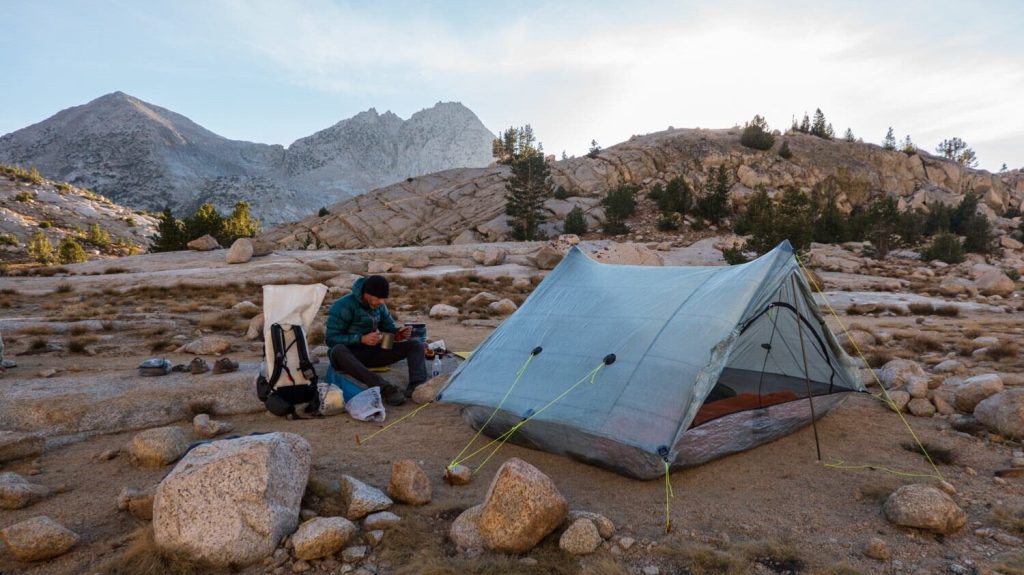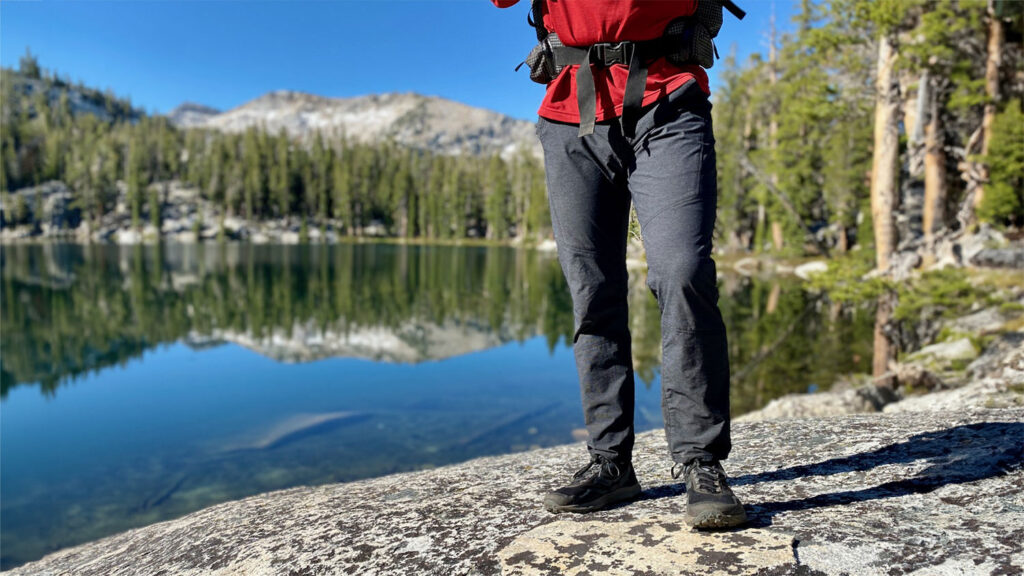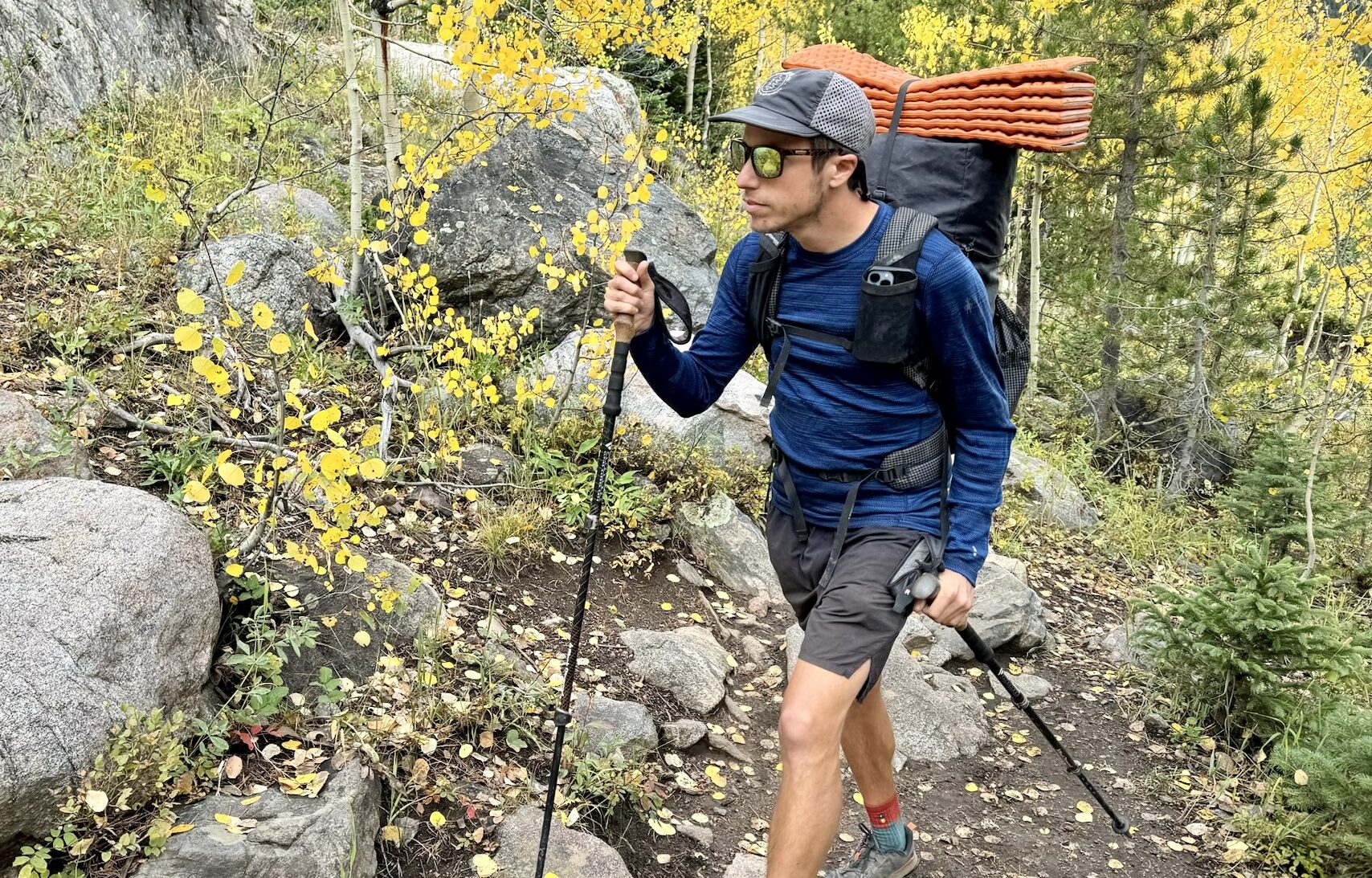
Base layers are essential to an outdoor clothing system. When you need to regulate your temperature and manage moisture in the blazing heat or blizzards, base layers are the first line of defense. We’ve rigorously researched 30 sets and tested the nine most promising options side-by-side to provide this review of the best base layers available.
After thousands of days and nights on trail, we know which ones are the warmest, lightest, most breathable, most comfortable, and most versatile for a range of uses. Our favorite layers come from reputable brands such as Smartwool, Patagonia, Arc’teryx, REI, Icebreaker, Ortovox, Outdoor Research, and Helly Hansen.
And for more info, check out some of our other most popular gear guides:
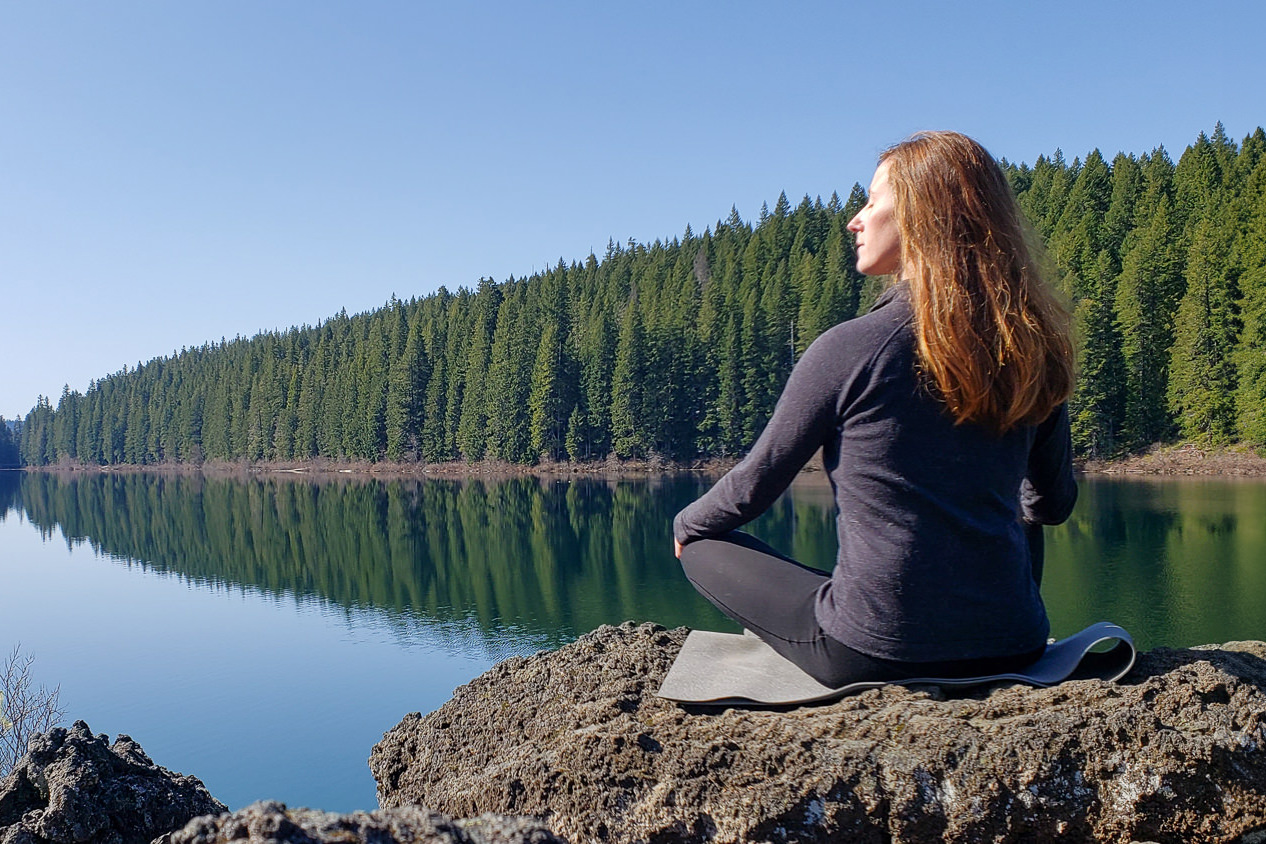
Quick Picks for Base Layers
Check out this quick list of the best base layers, or continue scrolling to see our full list of favorites with in-depth reviews.
Best Overall Base Layer: REI Midweight Half Zip Men’s ($60) / Women’s ($60)
Warmest Base Layer: Arc’teryx Rho Heavyweight Zip Neck Men’s ($140) / Women’s ($150)
Best Technical Cold Weather Base Layer: Smartwool Classic Thermal Men’s ($45) / Women’s ($45)
Best Warmth-to-Weight Ratio: Ortovox 185 Merino Rock’n’Wool Men’s ($110) / Women’s ($110)
Best Sun Shirt Base Layer: Outdoor Research Echo Hoodie Men’s ($75) / Women’s ($75)
Warmest Wool Base Layer: Smartwool Classic Thermal Men’s ($115) / Women’s ($115)
Breathable Midweight Base Layer: Patagonia Capilene Midweight Crew Men’s ($75) / Women’s ($75)
Versatile Wool Base Layer: Icebreaker Merino 200 Oasis Men’s ($105) / Women’s ($105)
Best Lightweight Wool Base Layer: Smartwool Classic All-Season Men’s ($90) / Women’s ($90)
Most Affordable Base Layer: Helly Hansen Lifa Stripe Men’s ($45) / Women’s ($45)
What’s New
We put a few different base layers through the wringer and picked a new overall winner.
- The REI Midweight Half Zip takes the prize for our best overall base layer due to its versatility, warmth, and cozy comfort.
- We welcomed the addition of the Arc’teryx Rho Heavyweight Zip Neck for its superior warmth and ability to double as a mid-layer.
- The Ortovox Rock’n’Wool was impossible to pass up with its excellent warmth-to-weight ratio.
- We added the Icebreaker Merino 200 Oasis for a breathable wool base layer that nails the sweet spot for midweight warmth.
Base Layers Overall Testing Scores
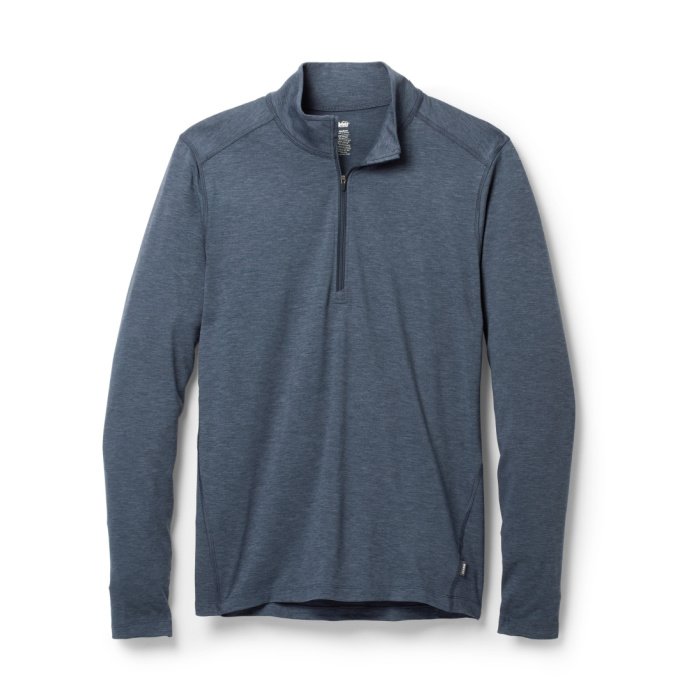
REI Midweight Half Zip
Best Budget Base Layer
CleverHiker Rating: 87.8/100
Price: $60
Weight: 9.8 oz.(Men’s M)
Fabric/Weight: Midweight polyester
Pros
- Affordable
- Durable
- Warm
- Comfortable
- Versatile
- Thumbholes
Cons
- Not odor resistant
- Heavier than most
Sometimes, you come across a budget option that performs just as well as higher-end items, which is certainly true with REI’s Midweight Half Zip base layer (men’s / women’s). This base layer is warm, durable, and comfy against the skin, and it’s become a staple in our layering system.
It’s on the heavy side compared to others, so we tend to only take it out in colder temperatures when we know we’ll be wearing it for most of our time outside. That said, the weight is still reasonable for packing it as a just-in-case item if you’re the type that likes to have an extra layer for sleeping on chilly nights. The zipper and fit make it a supremely layerable option that can be used as either a warm base layer or a lightweight mid-layer.
Although the zipper allows you to dump some heat when you get a little steamy, this base layer isn’t as breathable or moisture-wicking as wool, so we wouldn’t recommend it as the best option for high-output activities. It also isn’t odor-resistant or coated with any antimicrobial treatment, so it’s best suited for short hikes or chilling at camp.
This top is durable enough for many seasons of use, making the already small price tag even more appealing. Its multi-season capability will fill in all the gaps where your lightweight and heavyweight base layers are lacking. If you’re in need of something warm, versatile, and well-built on a budget, this is your guy.
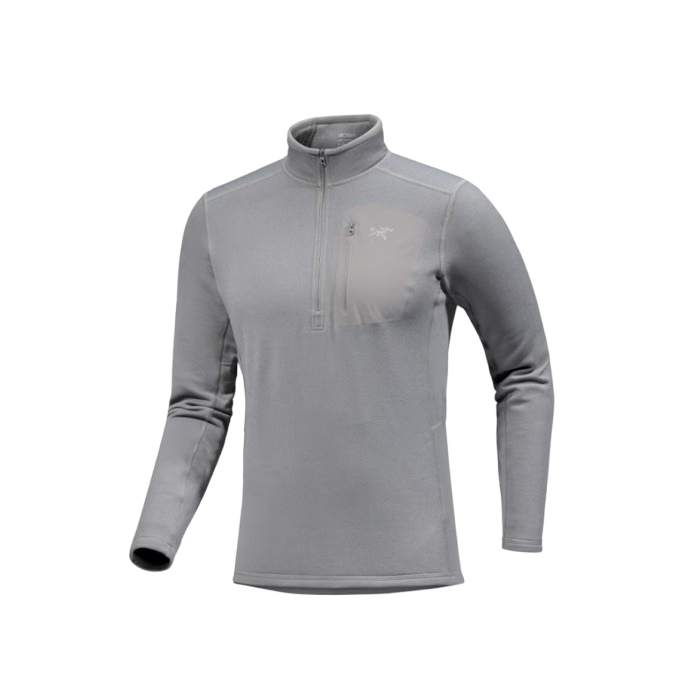
Arc’teryx Rho Heavyweight Zip-Neck
Warmest Base Layer
CleverHiker Rating: 86.5/100
Price: $140
Weight: 10.1 oz.(Men’s M)
Fabric/Weight: Heavyweight polyester + nylon + elastine
Pros
- Warm
- Comfortable
- Stylish
- Sleeve pocket (women's)
- Chest pocket (men's)
- Can be used as a mid-layer
Cons
- Heavy
- Too warm for some uses
- Bulky
- Expensive
The Arc’teryx Rho Heavyweight Zip Neck base layer (men’s / women’s) is cozy, warm, and perfect for cold-weather outings. The brushed inner fabric feels incredibly smooth against the skin and wicks moisture well to speed up drying time and keep you warm. The versatility of this layer has made it a go-to for us from fall to spring.
In addition to its warmth, this top provides a few thoughtful features not offered by many other base layers. The tall collar extends its superior warmth into the neck and those critical temperature-regulating zones, while the zipper allows you to dump excess heat. The zippered breast pocket does add a little weight. It’s still worth it for a handy place to store snacks or a smartphone, and the outer pocket material is smooth and durable.
This is easily one of the most stylish base layers on our list. It looks great by itself or layered over a t-shirt or thinner base layer. We love keeping this layer on hand for early-morning ski tours or grabbing a beer with the in-laws.
While it does have impressive moisture wicking and breathability for its weight, this top is most useful from late fall into early spring. We usually opt to leave it at home during the warm months. The Rho Heavyweight is best suited as an extra mid-layer for shoulder seasons or when you need the warmest base layer for winter expeditions.

Smartwool Intraknit Thermal Merino
Best Technical Cold Weather Base Layer
CleverHiker Rating: 81/100
Price: $130
Weight: 7.3 oz.(Men’s M)
Fabric/Weight: Merino Wool + Polyester + Elastane
Pros
- High Tech
- Breathable
- Warm
- Comfortable
Cons
- Expensive
- Not Durable
The Smartwool Intraknit Thermal Merino Base Layer (men’s/women’s) is a high-performance winter base layer ideal for active adventures. The innovative design allows exceptional mobility, breathability, and thermal regulation during intense cold-weather pursuits.
The cornerstone of the Intraknit Thermal’s performance is its unique knit structure, which balances warmth and breathability through strategically placed mesh zones. Unlike traditional base layers that compromise between heat retention and ventilation, this layer makes no such concessions.
The merino wool and polyester blend provides natural odor resistance and moisture-wicking properties that keep you dry during high-output activities. We were particularly impressed by its warmth-to-weight ratio, which achieves some of the highest thermal efficiency of any layer we’ve tested. The slim, athletic fit, 3D mapping, and unique knit structures in the elbows, wrists, forearms, shoulders, and waist allow excellent mobility without constriction.
Despite its premium price point, the Intraknit Thermal isn’t trying to be a do-it-all base layer. It specializes in high-intensity winter activities, from trail running to winter camping. While it may not be the most durable layer, it absolutely excels in its intended environment.
For the active adventurer who refuses to let cold temperatures limit their outdoor pursuits, this is a great base layer with which to go the distance.
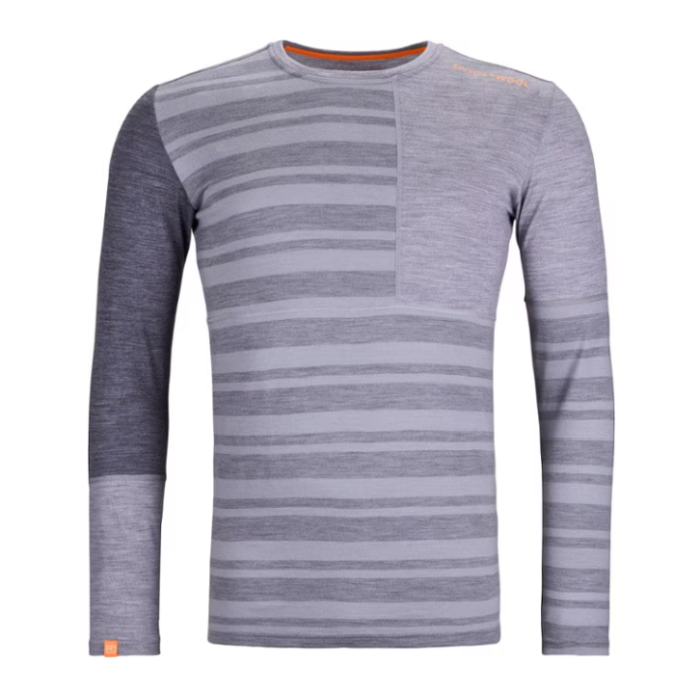
Ortovox 185 Rock’n’Wool
Best Warmth-to-Weight Ratio
CleverHiker Rating: 78/100
Price: $110
Weight: 6.6 oz.(Men’s M)
Fabric/Weight: Midweight merino wool
Pros
- Excellent warmth-to-weight
- Odor-resistant
- Athletic fit
- Moisture wicking
Cons
- Style might not appeal to some
- Tends to wedgie
If you’re looking for something that will keep you warm without weighing down your pack, the Ortovox 185 Merino Rock’n’Wool base layer (men’s / women’s) balances warmth and weight. At 6.6 ounces, it falls in the lightweight base layer range, but its warmth performs like a midweight base layer.
The merino wool, which can be itchy on some garments, is actually remarkably smooth on this layer. The fine inner material feels soft against the skin, and the snug fit feels like a cozy hug. Because of its athletic fit, this top can sometimes “wedgie” underneath other fitted layers during heavy activity.
This top benefits from all of merino wool’s natural characteristics of excellent moisture wicking, temperature regulation, and odor resistance. It’s a great choice for winter camping when you’ll be wearing the same base layers for days on end without changing. Due to its thickness, it’s not quite as breathable as other wool base layers and won’t pack down as small as synthetic tops.
The Rock’n’Wool comes in four different colors that all feature a split, asymmetrical design that is meant to signify the multi-faceted nature of all your outdoor adventures. While the designs are unique, they don’t scream casual wear and might not be appealing for everyone and every occasion.
Although it’s a little pricier, we think the Ortovox 185 Merino Rock’n’Wool base layer is one of the most versatile options on our list, making it worth every penny.
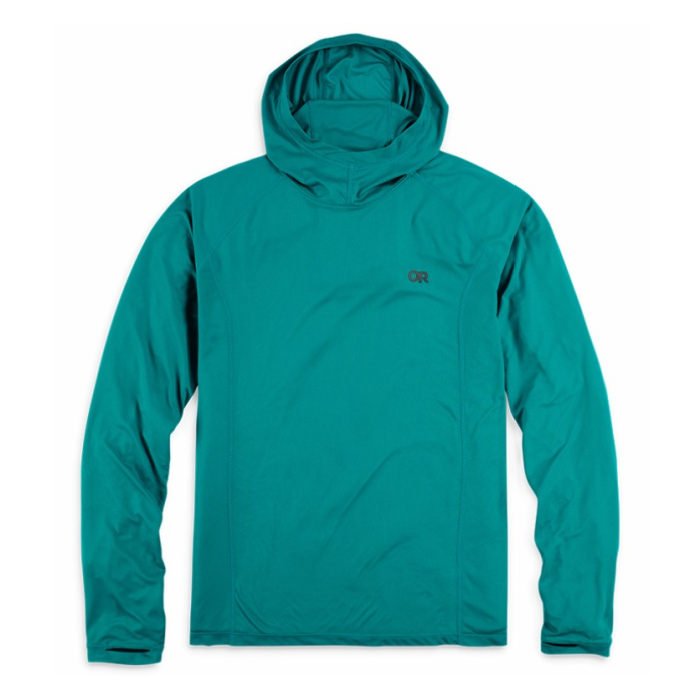
Outdoor Research Echo Hoodie
Best Sun Shirt
CleverHiker Rating: 77.8/100
Price: $75
Weight: 5.2 oz.(Men’s M)
Fabric/Weight: Lightweight polyester
Pros
- Hood
- Thumbholes
- Ultralight
- Full coverage
- Comfortable
Cons
- Lower UPF rating than others
- Not as durable
- Not very warm
The Outdoor Research Echo Hoodie (men’s / women’s) has been our go-to sun shirt for years since it’s ultralight, highly breathable, and incredibly comfortable. The hood and thumbholes provide ample coverage, while the fabric – quite frankly – feels like you’re wearing nothing at all. The flat seams are completely unnoticeable, and the raglan sleeves increase freedom of movement for those active days. While the synthetic fabric isn’t as odor-resistant as merino wool, it is treated with Outdoor Research’s ActiveFresh Odor Control to stave off the smellies.
The Echo Hoodie is best suited as a standalone layer for high-output activity on sunny days. The UPF 15 rating is lower than other sun hoodies, but its full coverage still makes it better suited as a sun shirt than any other base layer on our list. This top adds warmth to a layering system, but it’s not meant for winter use. It really shines when you want a cool breeze to penetrate your active layer and cool you off in the middle of a run.
As far as style goes, this hoodie looks great on its own. There are around 15 colorways, and the fit looks more casual than activewear.
The lightweight fabric sacrifices a bit of durability to remain cool and breathable, so you’ll want to treat it with care to make sure it lasts for years. That said, we’ve worn ours extensively without issues and think it’s an awesome choice for those who prioritize comfort above all else.
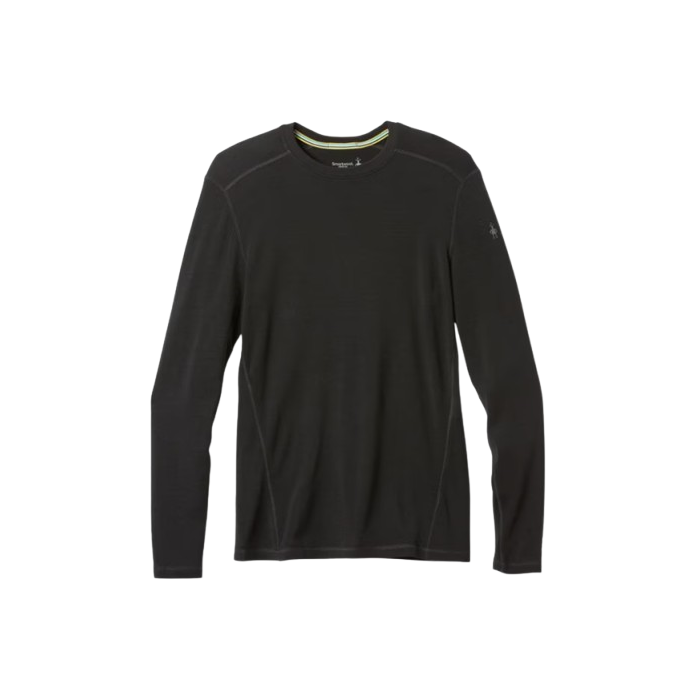
Smartwool Classic Thermal
Best Base Layer Overall
CleverHiker Rating: 76.5/100
Price: $115
Weight: 10.3 oz.(Men’s M)
Fabric/Weight: Midweight merino wool
Pros
- Warm
- Lots of color options
- Soft
- Odor-resistant
- Great moisture wicking
Cons
- Expensive
- Not as versatile as others
- Not the most breathable
The Smartwool Classic Thermal (men’s / women’s) is a warm and cozy base layer ideal for fall to spring. The Thermal is just the right thickness to help you thermoregulate in chilly fall and winter conditions. It is also available in a quarter-zip option with the added ability to dump excess heat buildup.
As a 100% merino wool base layer, the Thermal does an excellent job at wicking away moisture. While it wasn’t the fastest drying material of all the layers we tested, the wool still insulates while it is wet and quickly wicks moisture away from your skin so your core can stay warm. The wool is also naturally odor-resistant, which makes it ideal for multi-day trips.
Although it performs best in colder months, the Thermal can be used as a base layer or a mid-layer. The Interlock-knit wool is soft against the skin, and the flatlock seams are not noticeable. As a mid-layer, the shirt has enough extra fabric to be worn over a tighter-fitting base layer.
We give this top a lot of style points. The relaxed fit looks great as a standalone layer for lounging at camp or casual apres. Smartwool offers this shirt in a ton of different color waves to ensure that there is something for everyone.
The Classic Thermal is a little pricier, but its solid construction and premium fabrics make it well worth it.
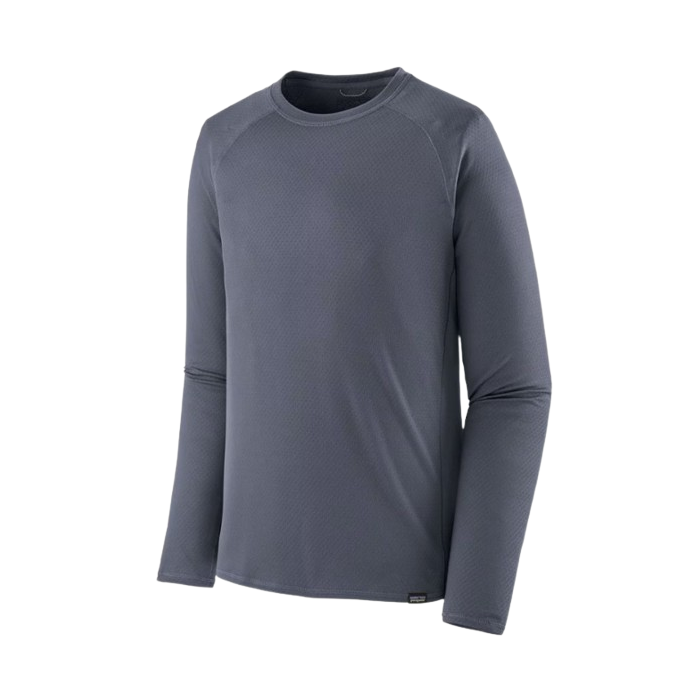
Patagonia Capilene Midweight Crew
Breathable Midweight Base Layer
CleverHiker Rating: 75.3/100
Price: $79
Weight: 6.2 oz.(Men’s M)
Fabric/Weight: Midweight polyester
Pros
- Affordable
- Durable
- Comfortable
- Easy to layer
Cons
- Not as warm or odor-resistant as wool
The Patagonia Capilene Midweight (men’s / women’s) is a durable and comfortable base layer top that’s quite a steal at its price point. We’ve used this top for multiple thru-hikes, and it’s still going strong nearly a decade later.
Patagonia’s proprietary Capilene blend is the softest, stretchiest, and best at wicking moisture of all the synthetic materials we’ve tested. While it doesn’t trap heat quite as efficiently as some wool base layers, the Capilene Midweight top is still highly versatile and easy to layer. It lays flat under mid-layers and doesn’t tend to wedgy with lots of movement. The fully gusseted underarms and stretchy fabric move with you and provide full mobility. We also appreciate the minimalist thumb loops, which help keep the sleeves in place when layering or delayering.
Compared to wool, the Capilene Midweight’s recycled polyester is more durable, stretchier, and packs down smaller. Although it’s not as antimicrobial as wool, Patagonia’s HeiQ Fresh odor control treatment does a good job of masking smells.
This top hits the sweet spot between warmth and breathability, making it a practical option all year round. During shoulder seasons, we often hike in this shirt by itself since it’s breathable and provides just the right amount of insulation for temperatures above freezing.
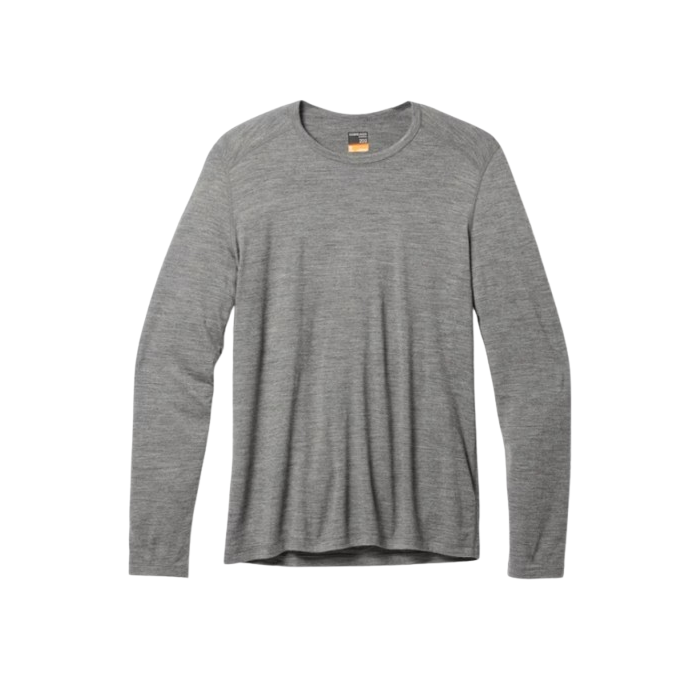
Icebreaker Merino 200 Oasis Long-Sleeve Crewe Thermal Top
Versatile Wool Base Layer
CleverHiker Rating: 74.3/100
Price: $105
Weight: 7.6 oz.(Men’s M)
Fabric/Weight: Midweight merino wool
Pros
- Odor-resistant
- Comfortable
- Breathable
- Packs down small
- Versatile
- Moisture wicking
Cons
- A little pricey
- Not as durable as some
The Icebreaker Merino 200 Oasis (men’s / women’s) was our choice as a hiking and sleeping base layer over 500 miles on the Colorado Trail. It’s versatile, 100% merino wool, a touch warmer and more comfortable than comparable options. This top does a great job filling the gap between ultralight wool base layers and medium to heavy base and mid layers.
This fabric weight is 200g/ms, adding a little more warmth than similar base layers while sacrificing a hair of breathability and drying time. However, because of merino wool’s natural moisture wicking, sweat is quickly dispersed to the outer layers of the fabric to avoid evaporative cooling. The added bonus of naturally odor-resistant wool makes it ideal for multi-day trips with lots of activity. Wool is known to be less durable than synthetic materials, but the slightly heavier fabric weight of the Oasis 200 will last a bit longer than thinner wool options.
The wool feels soft against the skin, and the flatlock seams aren’t perceivable at all. We did notice a little bit of scrunching when we layered the top and moved around, but it was minor and certainly not a deal breaker.
The Merino 200 Oasis features a comfortable fit with gusseted underarms for added mobility and a slightly looser crew neck. Icebreaker provides ample colorways, but its pajama-like appearance isn’t the best option for casual wear.
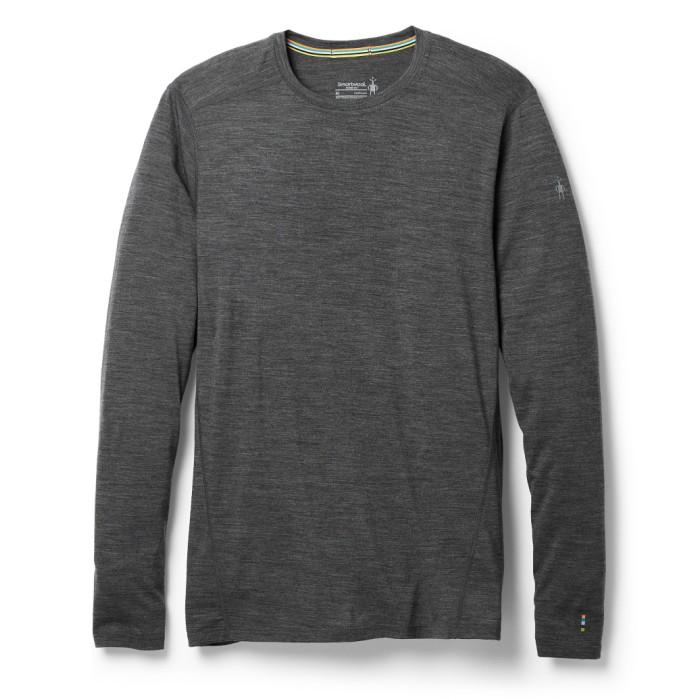
Smartwool Classic All-Season
Best Lightweight Wool Base Layer
CleverHiker Rating: 76.5/100
Price: $115
Weight: 6.5 oz.(Men’s M)
Fabric/Weight: Lightweight merino wool + nylon
Pros
- Breathable
- Dries quickly
- Good warmth-to-weight
- Odor-resistant
Cons
- Lightweight material doesn't last as long
- A little itchy at first
- Noticeable seams
The Smartwool Classic All-Season base layer (men’s / women’s) is one of our favorites all year round. We found it is the right thermal weight for most summer camping trips. It’s thin and breathable for when the sun is out but also a cozy base layer for cool nights in the 50s. During our dry speed tests, this top performed among the best. It even dried out quicker than some 100% merino wool layers.
The fabric is an 88% merino wool and 12% nylon blend that weaves in the advantages of both natural and synthetic fibers. The naturally odor-resistant wool sits against your skin, wicking moisture away and helping with fast dry times, while the nylon core adds durability and elasticity. While the fabric is drying, the insulating wool layer keeps you warm even when the top is a little wet.
We like the relaxed fit of the Classic All-Season, but we found it to be a little itchier than some of the other layers we tested. The seams are a bit noticeable against the skin as well, and it can tend to bunch up under lots of layers during increased activity. However, the pajama-like fit is comforting and makes this layer a great option for sleeping or hanging in camp.
For ultralight backpacking, this is a great lightweight top. It’s warm at night, breathes well, and is only 6.5 ounces. Though the thin material is a little less durable in the long run, and some of the lighter women’s colors are semi-see-through, this is still an excellent option for cool (but not cold) summer backpacking trips.
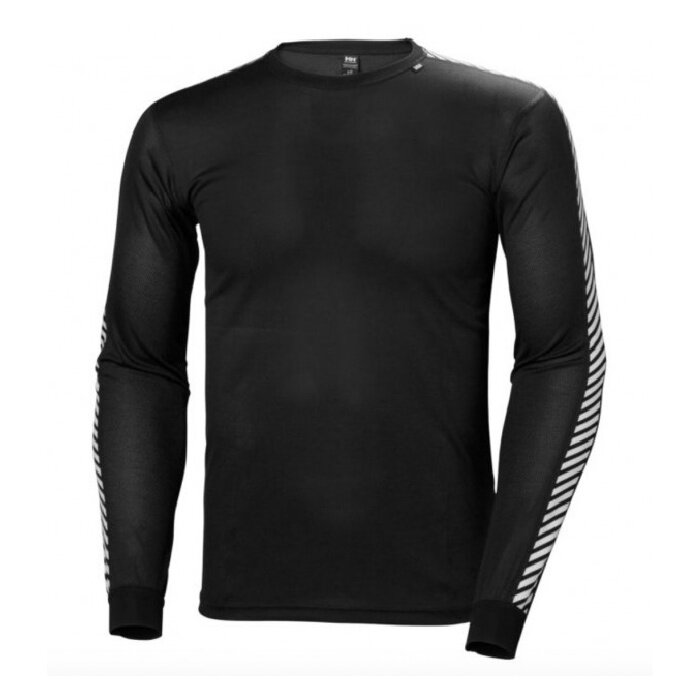
Helly Hansen Lifa Stripe Crew
Most Affordable Base Layer
CleverHiker Rating: 69.5/100
Price: $45
Weight: 4.8 oz.(Men’s M)
Fabric/Weight: Lightweight polyester + polypropylene
Pros
- Affordable
- Quick-drying
- Athletic fit
- Ultralight
- Very breathable
Cons
- Not odor-resistant
- Not as warm as others
- Runs small
- Not as versatile as others
The Helly Hansen Lifa Stripe Crew base layer (men’s / women’s) is the lightest, most breathable, and most affordable base layer we tested. Helly Hansen’s proprietary Lifa Dry material excels at moisture wicking and dries very quickly, making it a great choice for high-output activities. The fully synthetic material is also very stretchy, so the fabric moves with you when you’re on the go. This top features a low-profile, athletic fit that does run a bit on the small size. We recommend sizing up one size with this base layer.
This base layer isn’t as warm as others on our list, but the fit and flatlock seams make it comfortable for layering under other clothing. It’s also designed with flat, fitted cuffs that work nicely under gloves. The Lifa Crew is optimal for trail running, backpacking, and cross-country skiing since it has just the right amount of insulation for active days.
The Lifa Stripe Crew is the lightest base layer we tested by about a half ounce, making it perfect for ultralight backpacking. We love it for brisk mornings on trail as much as cozying up for dinner and a sunset. If you get it sweaty, it dries quickly enough to be a warm shirt to sleep in as well. However, the synthetic material doesn’t have the natural odor-resistant qualities of wool, so it will start to stink over time.
The racing stripes on the sleeves are a unique look, but it might not be everyone’s cup of tea. We wouldn’t call it the most stylish standalone base layer, but this isn’t a deal breaker for us since it’s activewear and will usually be under another layer.

Product Comparison Table
| oSort | Product | Price | Weight | Fabric/Weight | Fit | Comfort | Warmth | Breathability | Versatility | Style | 0 |
REI Midweight Half Zip View Men's View Women's |
$60 | 9.8 oz. (Men’s M) | Midweight polyester | Half Zip | 9 | 9 | 7.5 | 9 | 9 | 1 |
Arc’teryx Rho Heavyweight Zip-Neck View Men's View Women's |
$140 | 10.1 oz. (Men’s M) | Heavyweight polyester + nylon + elastine | Half Zip | 9.5 | 9.5 | 6.5 | 7 | 9 | 2 |
Smartwool Intraknit Thermal Merino View Men's View Women's |
$130 | 7.3 oz. (Men’s M) | Merino Wool + Polyester + Elastane | Crew | 7.5 | 8.5 | 9 | 8 | 7.5 | 3 |
Ortovox 185 Rock’n’Wool View Men's View Women's |
$110 | 6.6 oz. (Men’s M) | Midweight merino wool | Crew | 8 | 8.5 | 7 | 7 | 7 | 4 |
Smartwool Classic All-Season View Men's View Women's |
$115 | 6.5 oz. (Men’s M) | Lightweight merino wool + nylon | Crew | 7 | 7 | 8.5 | 7 | 7.5 | 5 |
Helly Hansen Lifa Stripe Crew View Men's View Women's |
$45 | 4.8 oz. (Men’s M) | Lightweight polyester + polypropylene | Crew | 7 | 6.5 | 9 | 6 | 6 | 6 |
Outdoor Research Echo Hoodie View Men's View Women's |
$75 | 5.2 oz. (Men’s M) | Lightweight polyester | Hooded | 8.5 | 6.5 | 8.5 | 7.5 | 9 | 7 |
Patagonia Capilene Midweight Crew View Men's View Women's |
$79 | 6.2 oz. (Men’s M) | Midweight polyester | Crew | 7.5 | 7 | 8 | 8 | 8 | 8 |
Icebreaker Merino 200 Oasis Long-Sleeve Crewe Thermal Top View Men's View Women's |
$105 | 7.6 oz. (Men’s M) | Midweight merino wool | Crew | 7.5 | 7.5 | 7.5 | 7 | 7.5 |
|---|
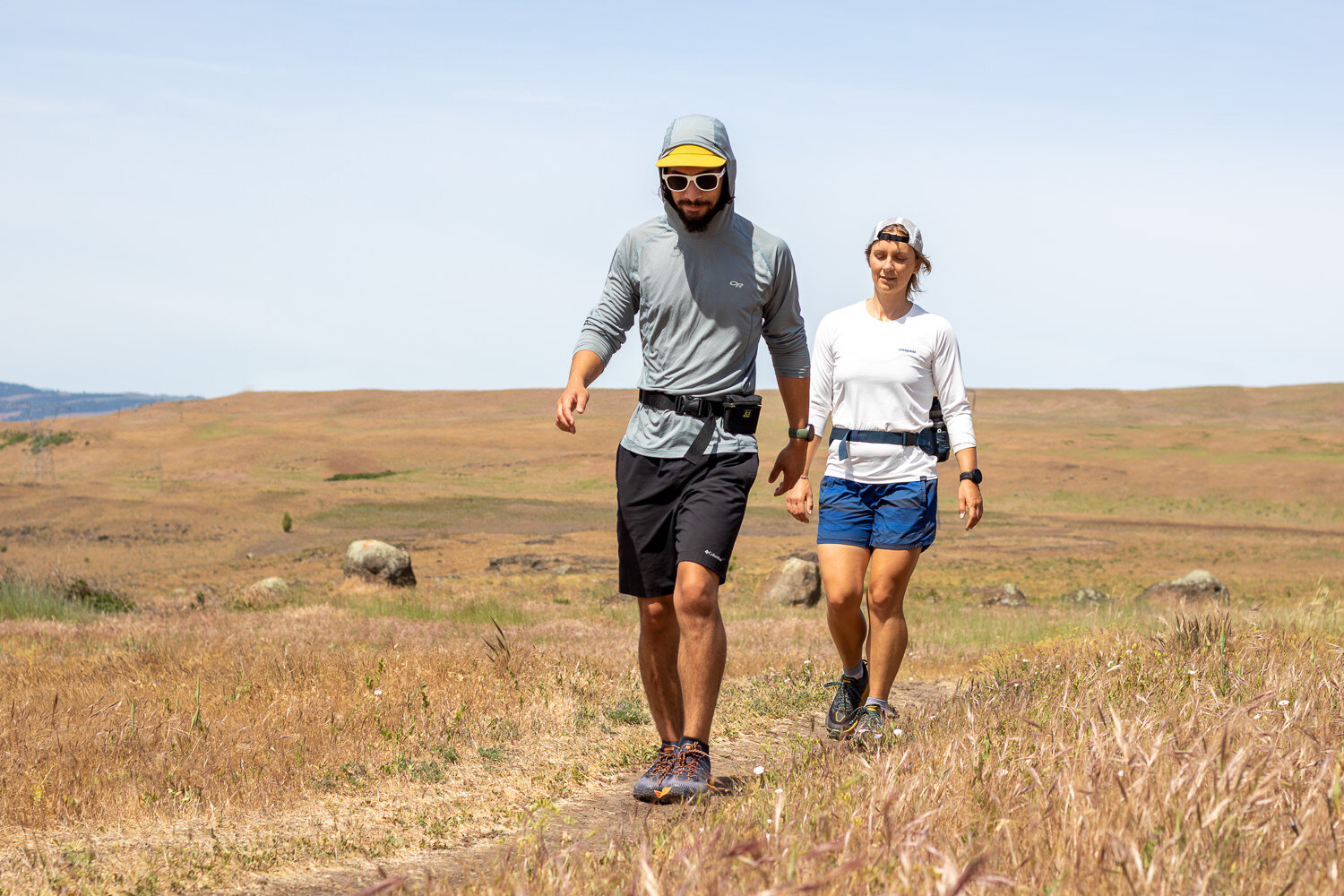
How We Test & Methodology
Our team of backcountry experts thoroughly tests each base layer in a wide range of scenarios to determine the most comfortable, versatile, breathable, warmest, and even the most stylish. We’ve put each layer through practical use over hundreds of miles of trail and weeks in the backcountry, from high alpine ridges to humid forests. We combine this practical experience with our expert industry knowledge and testing in a controlled environment.
COMFORT
Comfort is crucial for your outdoor apparel, profoundly influencing your overall experience. When gear is comfortable, it allows you to focus fully on the task at hand. While it’s without a doubt a subjective experience, we do our best to determine a layer’s general comfort in ways that everyone can relate to. We wear the layer against bare skin and layer it beneath and over top of other layers. We note whether it feels soft or itchy, if the seams are noticeable, and if it lays flat. We then wear it as part of a full laying system and do some twists, a little yoga – anything to get it to bunch up. All these observations culminate in a comprehensive comfort score that reflects its performance in real-world conditions.
WARMTH
Warmth can be a very tricky quality to determine in base layers. The environment is constantly changing, so it’s nearly impossible to do a controlled test. Therefore, most of our warmth determinations come from hours of real-life experience. We ski, hike, climb, lounge – anything to spend more time in each base layer. Apart from real-life experience, product specs also reliably determine warmth. For example, heavier weight is usually warmer than lightweight fabric. Plus, materials like wool are naturally warmer than synthetics. We consider all of these aspects when rating each base layer’s warmth.
BREATHABILITY
A garment’s breathability is how well it lets air flow through the fabric to regulate body temperature and ultimately keep you dry and comfortable. A standalone, active base layer allows a cooling breeze through the fabric to keep you from overheating and dries moisture trapped between your skin and the fabric.
For more insulating base layers, good breathability comes from effective moisture-wicking properties that evacuate moisture from your clothes to keep you dry. Without a breathable active layer, you would be left with a wet, heavy shirt that is potentially dangerous in freezing or variable weather. In addition to hiking and running in each base layer, we test this metric in a controlled setting by creating a wet spot on each base layer with an equal volume of water and timing how long it takes to dry. We also note how much wind can be felt through the garment.
VERSATILITY
No base layer can do it all. Some excel at high-output activities. Others are more suited for hunkering down over a fishing hole. But it’s certainly nice on the wallet when a piece of gear is more than a one-trick pony. Many components factor into a layer’s versatility: how many seasons is it appropriate for? Can it also be used as a mid-layer? And does it have handy features that expand its uses, like a neck zipper, pockets, thumbholes, or a hood? You are much more likely to reach for a base layer more often if it’s handy to use and if you can always find a place for it in your layering system.
STYLE
While style is probably the least important factor when choosing a base layer, we can’t deny that it’s something we consider. Who doesn’t want to look good and enjoy the clothes they’re wearing? We determine style based on two primary aspects: how many colorways are offered for the garment and how the aesthetic compares to casualwear. In other words, how out of place would it look at a dinner with strangers? If a brand offers a lot of color options, there is a good chance that there’s something for everyone to feel themselves in. Because base layers are usually the last to be seen, they often look a little pajama-like. If that’s the case, we assume most folks wouldn’t choose to wear it out for a company dinner.

Why Trust CleverHiker
Every expedition calls for a specific type of layering system, and it takes a diverse range of experiences to perfect the art of layering. Gear Analyst, Brett Kretzer, is an avid thru-hiker, rock climber, and snowboarder. He put a multitude of base layers to the test through thousands of miles on trail (including thru-hikes of the GR11, Colorado Trail, Long Trail, the Wonderland Trail, and more), hundreds of days on ski mountains, and a few seasons of backcountry splitboarding tours. From thick, humid rainforests to frigid, sub-zero temperatures, Brett has put himself in a wide range of conditions that have taught him how to dial in his gear and clothing selection.
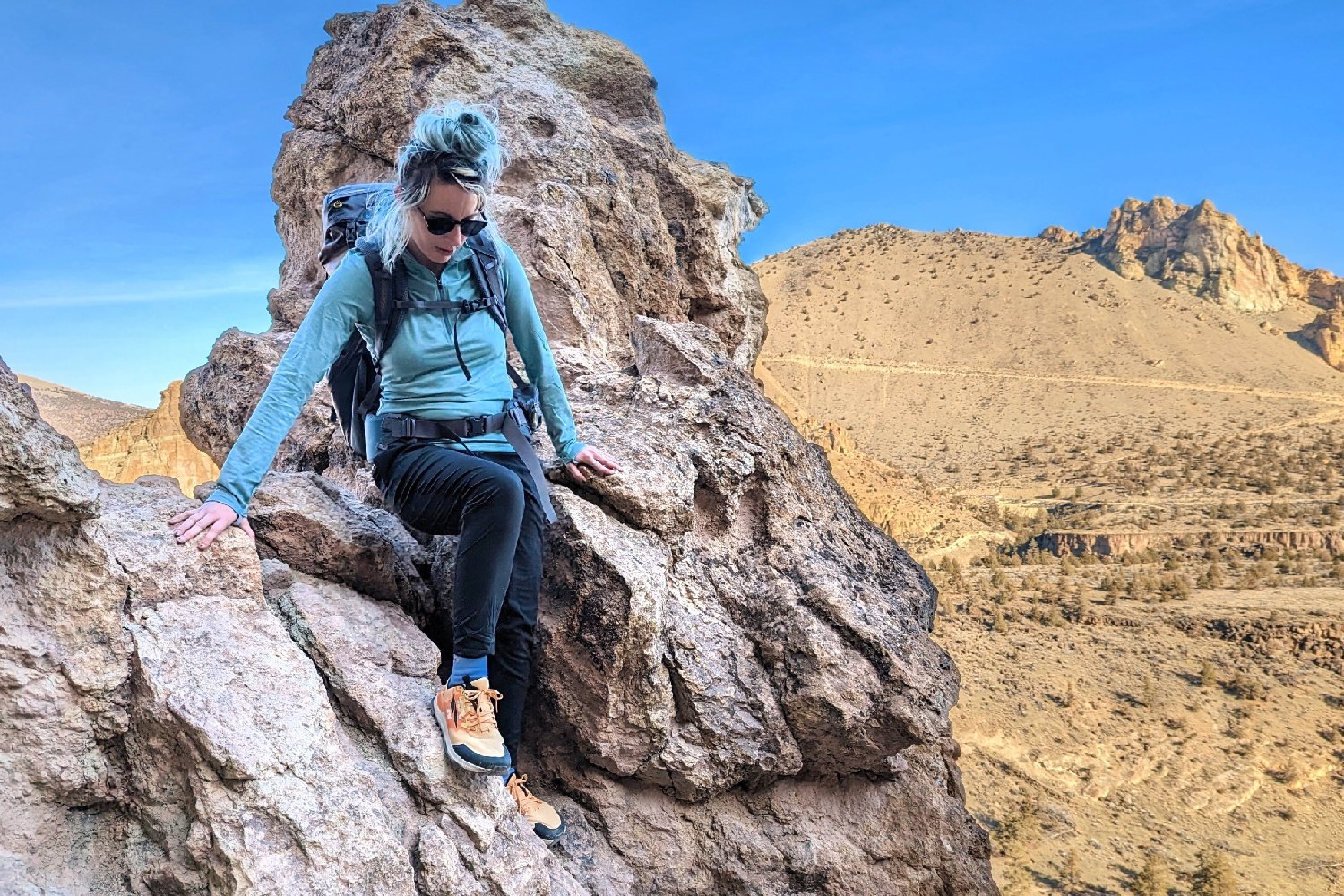
Analysis & Results
VALUE
It can seem unfair to compare base layers side by side given the different needs of activity, but we can get a general sense of a garment’s overall value by comparing its overall score across all dimensions to the price. The REI Midweight Half Zip impressed us with having the highest overall score as well as one of the lowest price tags. The Helly Hansen Lifa Stripe, on the other hand is the most affordable base layer we tested, but is targeted towards a very specific set of uses.
COMFORT
The comfort of a base layer is almost immediately noticeable when you put it on. Is it soft? Does it lay flat? Can you feel the seams? Wool can sometimes feel a little scratchy compared to synthetic fibers. Finally, flat and low-profile seams are much less noticeable on your skin than protruding ones.
The soft brushed inner material and cozy fit make the Arc’teryx Rho Heavyweight Zip Neck the most comfortable base layer on our list. Following closely behind is the REI Midweight Half Zip. Where the REI lacks in softness (although it is still incredibly soft) compared to the Arc’teryx, it makes up for in layerability. Both can be used as a mid-layer, but the REI fits better underneath other garments as a base layer. The common feature among both is the half zip, which allows you to dial in your heat retention and adjust the neck snugness.
Although it’s a totally different kind of comfort, the Outdoor Research Echo Hoodie impressed us with its completely unnoticeable seams, unobtrusive fit, and lack of bunching underneath other layers. The Echo really feels like you have nothing on at all.
The Ortovox 185 Merino Rock’n’Wool, while it tends to wedgie a little bit underneath other layers, is very soft with undetectable seams. Ortovox designed their wool fibers to be as soft as any other fabric. The 19-micron fibers used in the Rock’n’Wool are super fine and make for an incredibly soft touch. This top also utilizes a unique construction that is both snug and athletic.
Base layers that scored a bit lower were mostly either a little itchy or didn’t layer as well, with a tendency to bunch up.
WARMTH
Warmth may seem like a one-way street, but we can’t talk about the warmest base layers without discussing the lightest ones. The warmest base layer might be the best option for climbing Mt Kilimanjaro or hunkering down over an ice fishing hole, but it won’t be the right choice for a long, nordic ski ascent.
That being said, the Arc’teryx Rho Heavyweight Zip Neck is easily the warmest base layer we tested. It straddles the line between a base layer and mid-layer and is the only true heavyweight option we tested. Once again, close behind the Arc’teryx is the REI Midweight Half Zip base layer. While it’s marginally not as warm, the REI layers better in both directions, giving it the potential to be part of a warmer system overall. Surprisingly, neither of these layers is wool, typically a fabric with higher thermoregulation.
The warmest wool base layer we tested is the Smartwool Classic Thermal, a borderline mid-layer and isn’t the most breathable garment we tested. In this case, the lack of breathability actually helps trap heat.
The Ortovox 185 Merino Rock’n’Wool showed the best warmth-to-weight ratio of all the base layers we tested. At just 6.6 ounces, it feels almost as warm as layers nearly twice its weight. Heat retention is not always a consequence of heavier fabric. The Rock’n’Wool’s warmth comes from the fineness of the wool, which is tightly knit and form-fitting.
Finally, the Icebreaker Merino Oasis 200 strikes an excellent balance between weight, breathability, and warmth. Like the Rock’n’Wool, it falls in that sweet spot with a fabric weight of around 185-200g/ms. While the Rock’n’Wool is noticeably warmer, the Icebreaker has a more flowy fit and is a smidge more breathable.
BREATHABILITY
Warmth and breathability are two sides of the same coin. For a passive layer (sleeping and lounging), a non-breathable fabric helps trap warmth. However, if you plan a layer to get sweaty from lots of activity, breathability is your friend as optimal airflow quickly evaporates moisture and keeps you from getting cold.
The most breathable layer we tested, and therefore the best option for mitigating the chill on a fall run or an alpine start summit mission, is the Helly Hansen Lifa Stripe Crew. Close behind the Lifa Stripe are the Smartwool Classic All-Season and the Outdoor Research Echo Hoodie, each with unique benefits. The Classic All-Season is made primarily with merino wool, which has natural anti-odor and moisture-wicking properties. Wool more effectively wicks moisture away from your skin and to the outer layers of the material, which helps regulate your body temperature and speed up drying time. Once it dries, this wool layer will keep you warm and cozy lounging around camp. While not quite as warm, the Echo Hoodie is a supremely comfortable synthetic layer with handy features for spending all day in harmful UV rays. It has a UPF rating of 15 (20 UPF for the darker colors), and its hood and thumb loops provide full coverage.
A great synthetic counterpart to the Smartwool Classic All-Season is the Patagonia Capilene Midweight Crew. The Capilene is just as warm as the All-Season, but a tad less breathable. The fibers were more comfortable against the skin than the potentially itchy wool.
All of these layers are excellent choices for aerobic activity, and choosing between them depends on your intended use.
VERSATILITY
We understand that having a different base layer for every situation can get pricey, so we’ve rated each one’s versatility to determine which are best for a variety of uses. In other words, we’ve researched for you so you can get the best bang for your buck. Some layers are practical for ten months out of the year, while others are only realistic for a few seasons. In addition to being an excellent base layer, some of the tops we tested double as a sun shirt or a mid-layer.
The one that we found to have the highest level of diversity is the REI Midweight Half Zip. It’s thick enough to keep you warm as a base layer in harsh winter conditions, but the zippered neck allows you to dump excess heat when it becomes too much for shoulder seasons. It works great in early spring and late fall as a standalone layer, eliminating the need for a mid-layer overall. Speaking of mid-layers, this REI top fits loose enough to wear over a thinner base layer. We also consider the thumb loops a bonus in terms of versatility.
By a different token, the Patagonia Capilene Midweight Crew is versatile because it hits the fabric/weight sweet spot. The Capilene easily finds its way into your layer system all year round. Depending on the conditions, you may need to add a mid-layer or a short sleeve, but the Capilene rarely feels redundant or out of place.
The Outdoor Research Echo Hoodie deserves mention in the versatility category as it’s the only base layer on our list that effectively doubles as a sun shirt. You can wear it hiking all day long for full coverage. It is a lightweight, breathable layer, and when the sun goes down, it adds an extra layer of warmth beneath your fleece or puffy jacket.
The most versatile layering system has two or three base layers to choose from, but if you only want one, one of these is your best bet.
STYLE
Manufacturers don’t choose colors, patterns, and cuts randomly. They know that consumers want to both feel good and look good. There’s even a versatility element in style as well – why not get an extra piece of casual wear out of your outdoor gear? Because base layers are essentially underwear, a lot of them give a ‘pajama’ vibe. However, several of the base layers on our list would look just as good as a standalone layer from the ski lift to the brewery.
The Smartwool Classic Thermal makes this list for its flattering fit and sheer number of color options. From stripes to solid colors to full prints, the Classic Thermal comes in a whopping 24 different colors and patterns – far more than any other base layer on our list.
In addition to a relaxed fit and ample colorways, we love the look of a zippered neck. Both the REI Midweight Half Zip and the Arc’teryx Rho Heavyweight Zip Neck offer this feature. The zipper allows you to tailor your look in various ways, and something looks great about a half zip. As a bonus, the Arc’teryx gives you a handy dandy breast pocket to stash your smartphone, cash, or sunglasses.
In western states like Colorado and Utah, where the sun is intense, it’s very common to see folks walking around town in a sun hoodie. The Outdoor Research Echo Hoodie is one of those slick garments that looks just as appropriate in town as it does in the high alpine and comes in 15 different colorways.
While not quite as stylish as the aforementioned layers and with fewer color options, the Patagonia Capilene Midweight Crew and the Smartwool Class All-Season still look pretty sharp while bordering pajama territory.
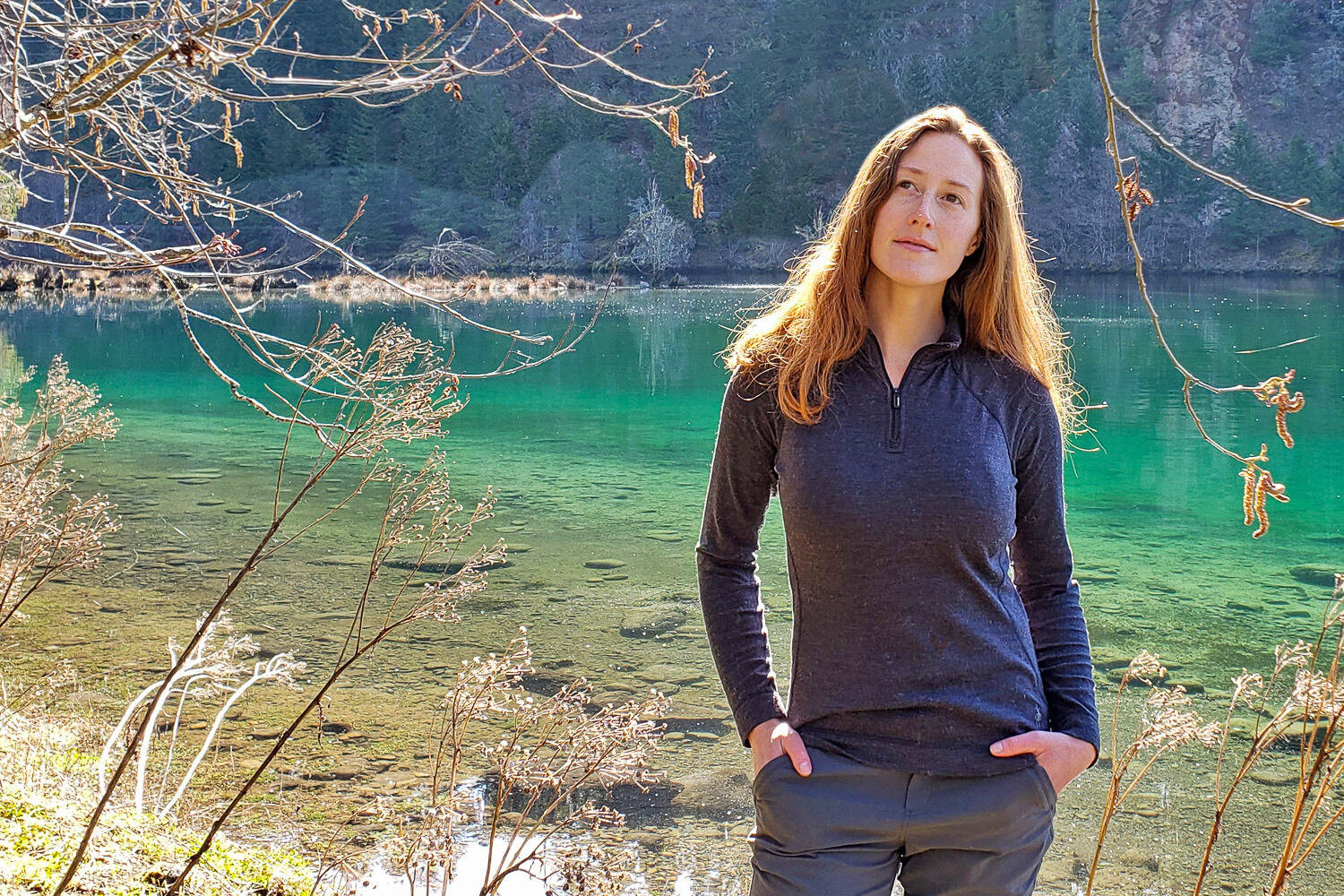
How to Choose a Base Layer
Choosing a base layer isn’t always straightforward, depending on how you plan to use it. Will you be ski touring during a multi-day hut trip or going on a chill fall backpacking trip full of leisure activities? Or maybe you’re heading out on a hunting trip where you’ll be hunkered down in a blind for hours at a time. Each scenario requires a different combination of material, warmth, breathability, and more.
MATERIAL
A base layer’s material can be a good indicator of how it will perform in various conditions. Below, we’ll detail some pros and cons of the most common base layer materials.
Wool
Wool tends to be more expensive than synthetic base layers, but it also has the best balance of heat efficiency, odor control, and moisture-wicking capability. Wool layers may not last as long as synthetic ones, and they tend to pill after washing and hold onto lint and pet hair. That said, if you use our technical fabric care tips below, you should still get plenty of use out of your wool clothing.
Polyester
Polyester clothing is durable, quick-drying, and typically lighter weight than wool. We love synthetic shirts for their extra breathability and often slightly more accessible price points. Synthetic layers don’t insulate as well as wool and can sap a lot of your heat if they get wet. Still, they’re much easier to care for and shouldn’t need to be replaced for many years.
Silk
Silk is highly packable and has an excellent warmth-to-weight ratio. This ultralight material dries quickly and is very durable for the weight, but it does require extra special care to maintain. Because of the delicate nature of this material, we tend to use silk base layers for sleep clothes rather than on the trail. The soft texture is super comfy and a great option for anyone with sensitive skin. Though it’s not as effective at insulating when wet, we like to wear silk base layers inside our sleeping bag to protect them from sweat and trail grime.
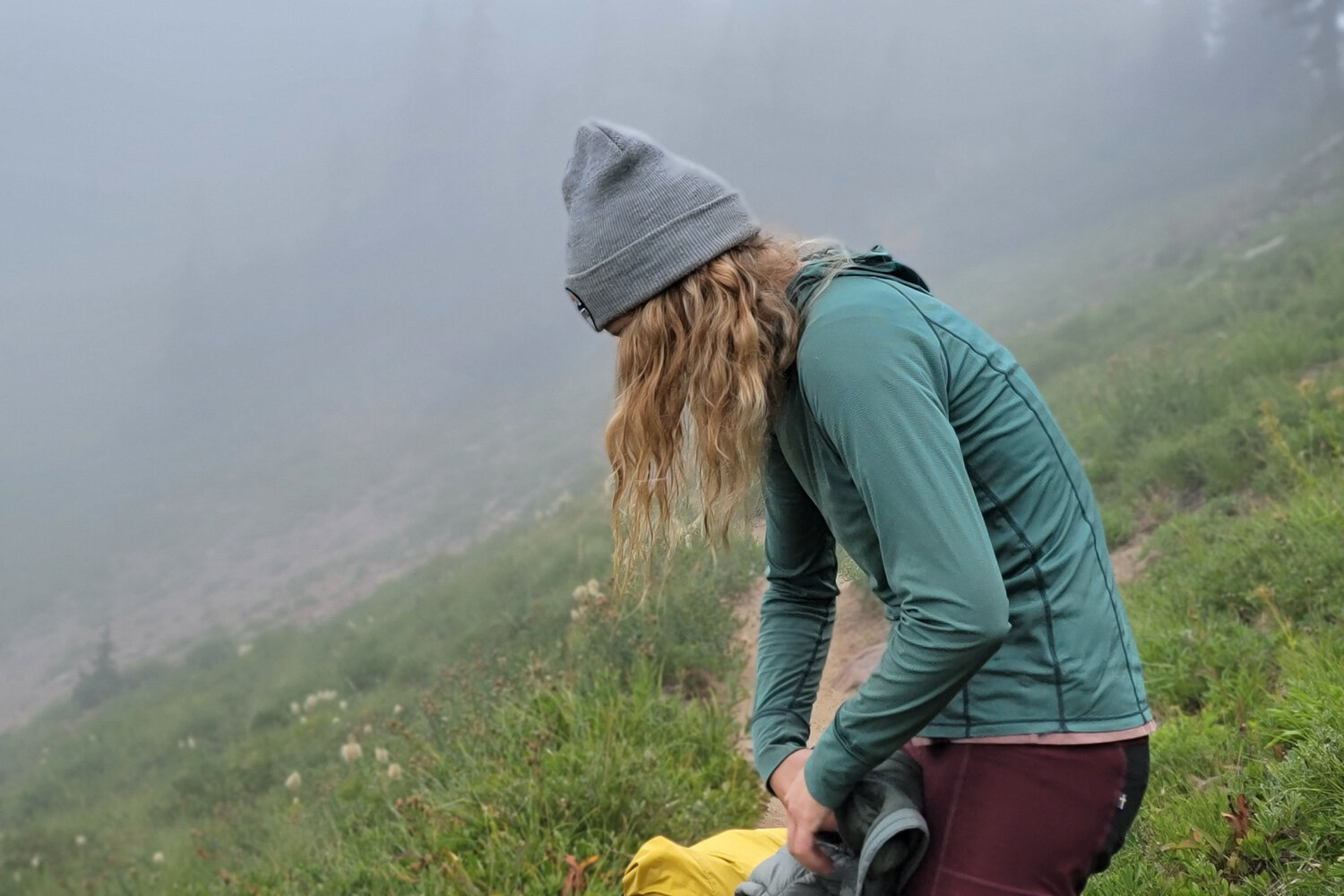
WARMTH VS. BREATHABILITY
While a thick wool base layer does an excellent job at keeping you warm, it won’t be the most breathable and could end up making you dangerously cold if it gets wet. On the other hand, for aerobic activities like skiing or running, where you know you will sweat no matter what, you may want the extra breathability of synthetics to help dry you and your clothes. In other words, moisture is bad, and you want to choose the layer that will keep you warm and dry based on the expected activities and conditions.
TIPS FOR LAYERING
Finding the perfect outdoor clothing layering system ultimately comes down to personal preference and the conditions you’re adventuring in. Check out our Hiking Clothing 101 article for some great tips to help you find what works for you.
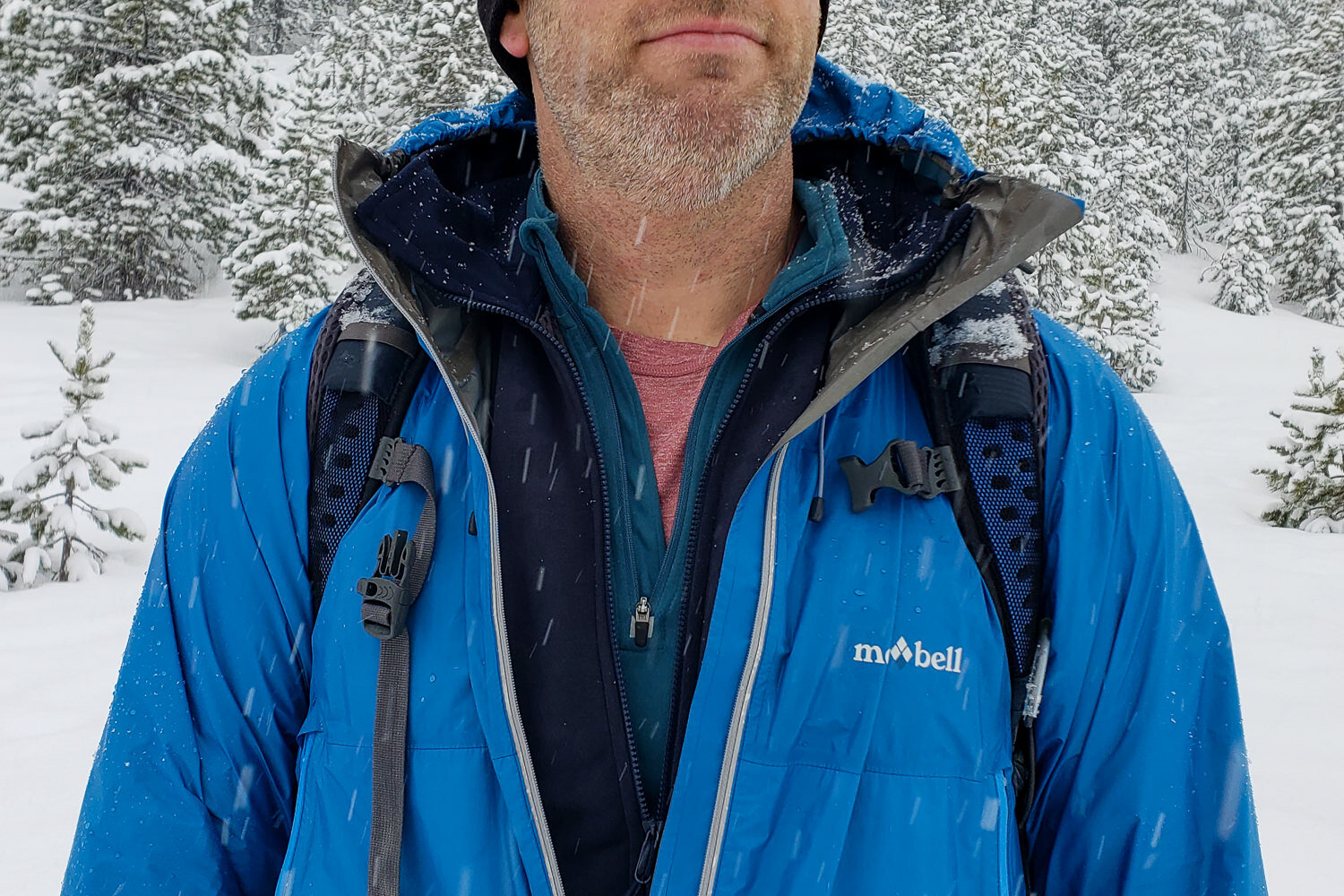
CARING FOR TECHNICAL FABRICS
Finding the perfect outdoor clothing layering system ultimately comes down to personal preference and the conditions you’re adventuring in. Check out our Hiking Clothing 101 article for some great tips to help you find what works for you.
- Use a front-loading washer – The agitator in a top-loading washer can snag zippers or drawstrings and be hard on delicate fabrics and seams. Make sure you zip all the zippers and tie the drawstrings before washing to prevent wear and tear.
- Use a technical fabric wash – We recommend Nikwax Tech Wash or Woolite for washing any technical fabrics because these solutions won’t leave fragrances or residue on your clothing.
- Only wash when you really need to – A lot of technical fabrics are designed to be antimicrobial and shouldn’t hold odors. Hiking clothing doesn’t necessarily need to be washed after every use.
- Don’t use fabric softener or dryer sheets – Fabric softener and dryer sheets can leave behind residue on the fabric and negatively affect performance by reducing breathability and insulation quality.
- Hang dry when possible – Heat and agitation in the dryer can damage technical fabrics, so it’s best to lay them flat or hang them on a line to dry naturally.
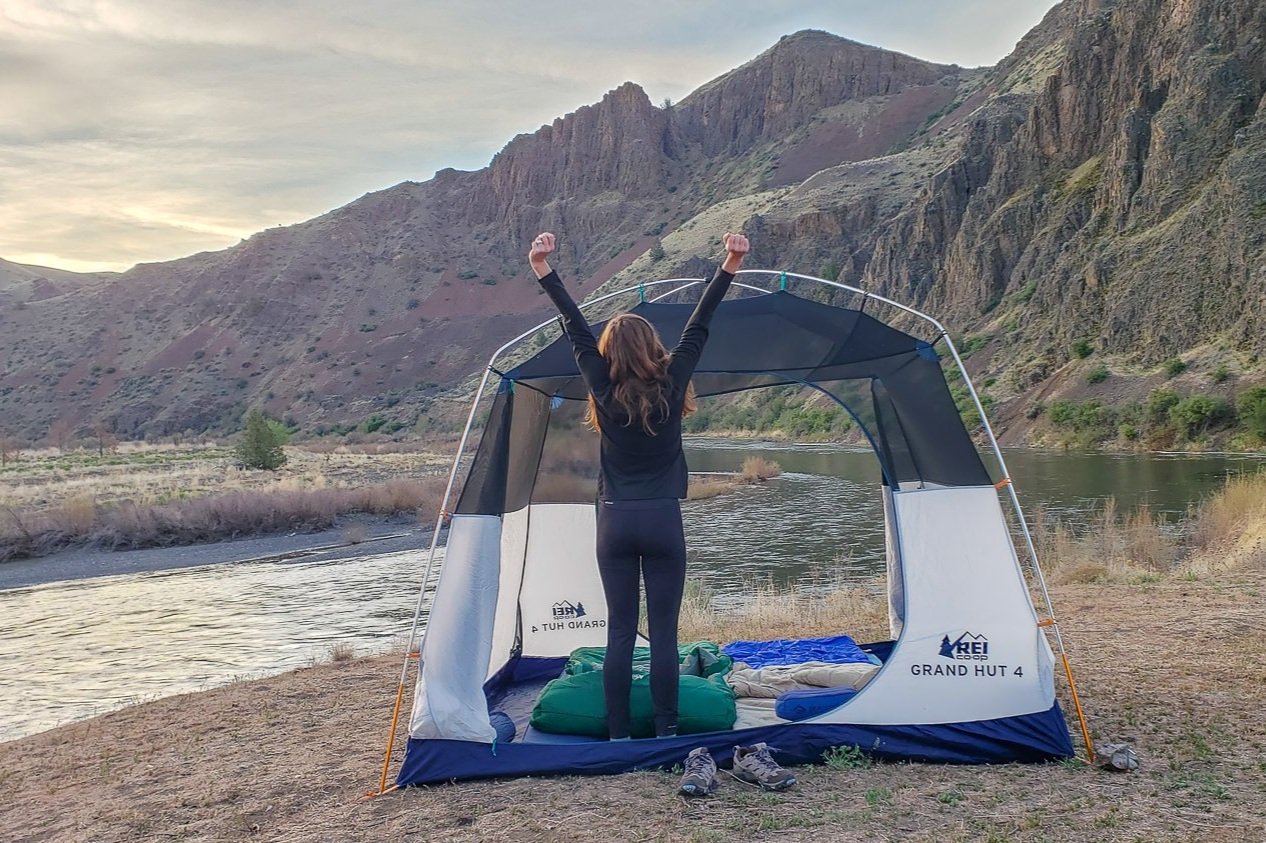
CONCLUSION
Whether packing for a glamping trip or preparing for an intense ski-mountaineering expedition, choosing the right base layer for the task at hand can make or break your experience. Depending on the situation, you might need warmth over breathability or versatility over comfort. Whatever the case, layering is truly an art. We hope we’ve provided valuable guidance and clarity to help you choose the perfect layers for all of your outdoor adventures.

